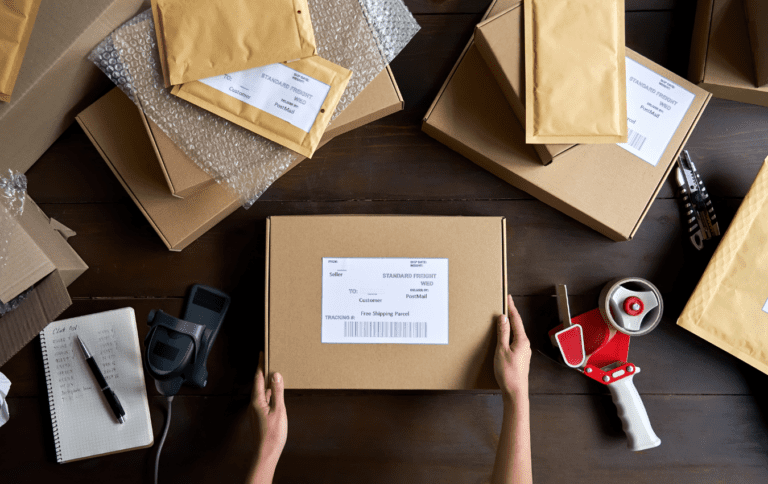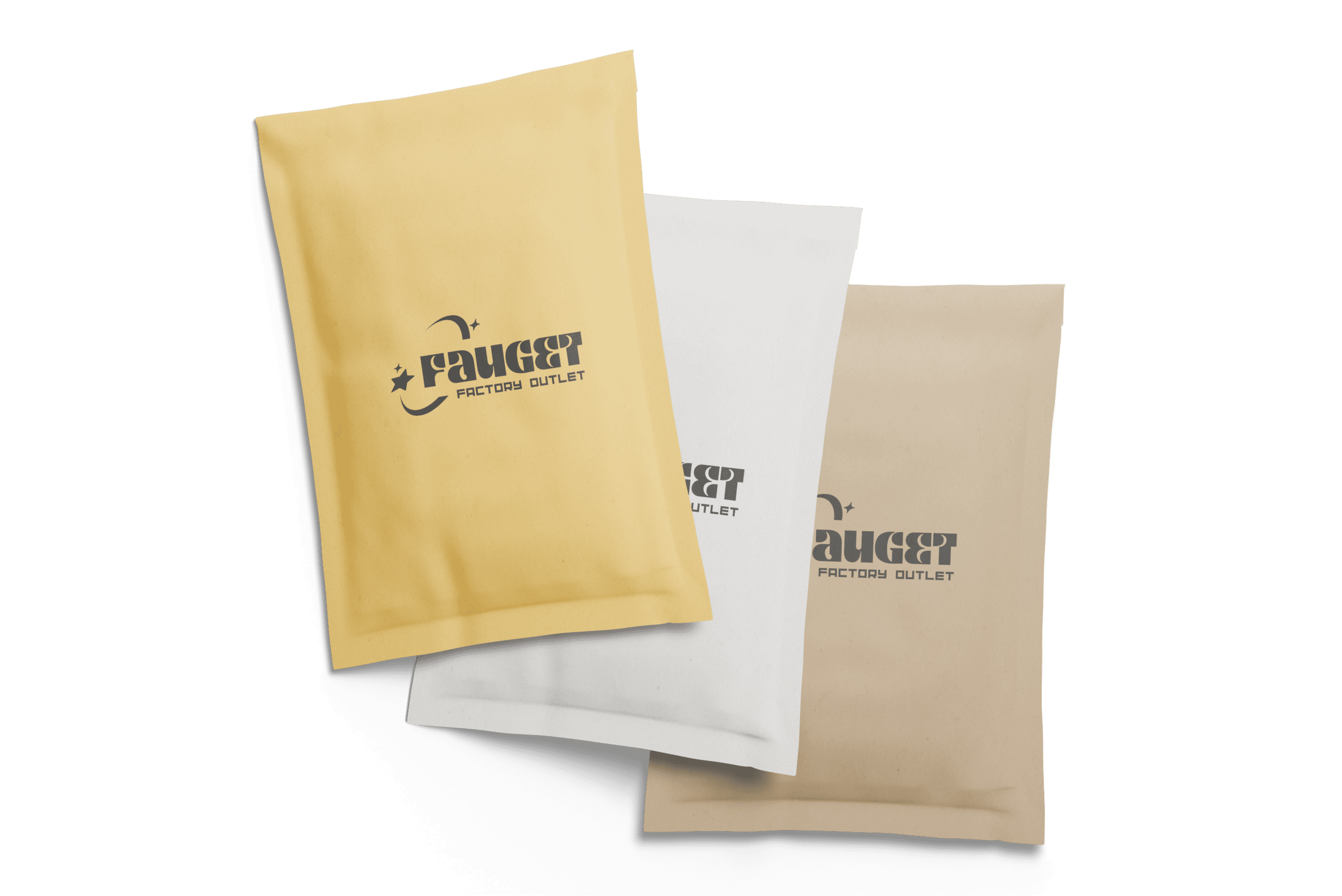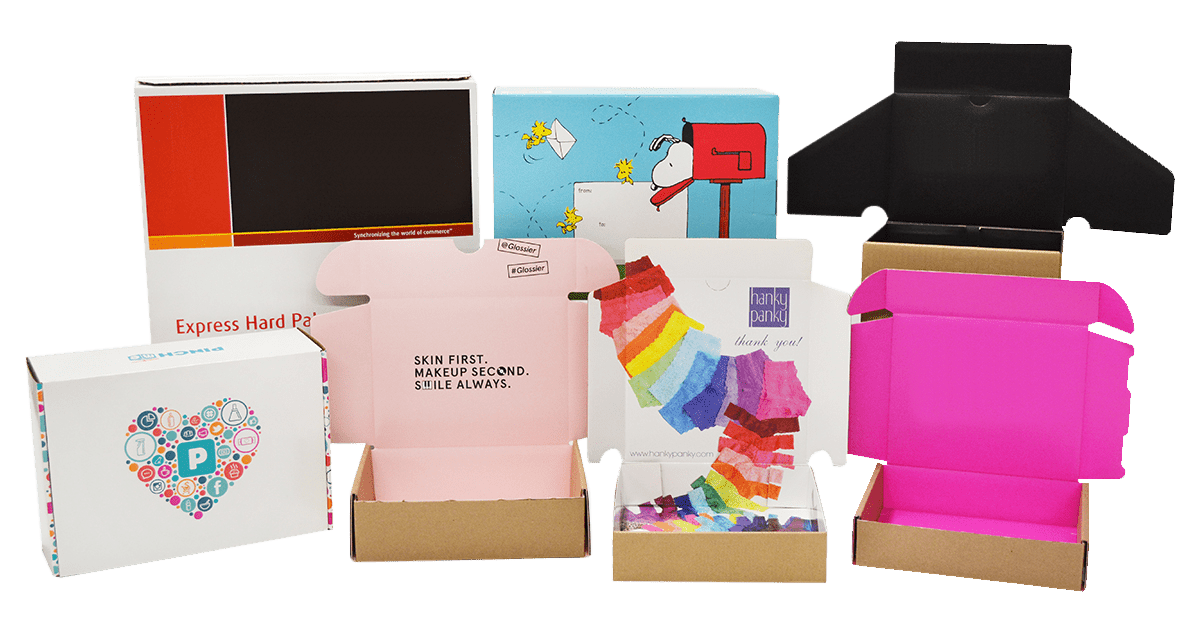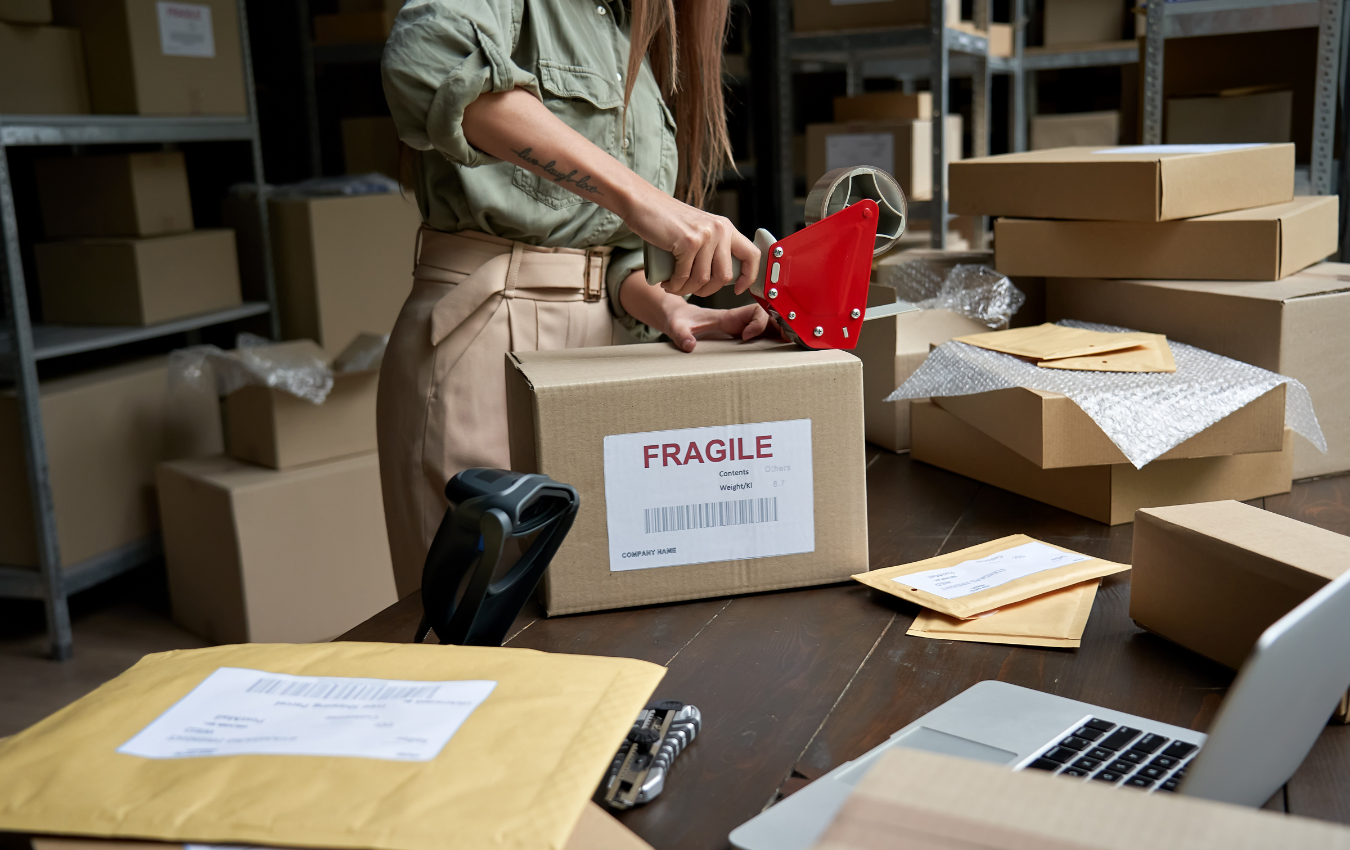Home » The Impact of E-commerce on Packaging: Challenges and Opportunities
The Impact of E-commerce on Packaging: Challenges and Opportunities

In recent years, the world has seen a rapid growth in the e-commerce industry. With the convenience of online shopping and the ability to purchase goods and services from the comfort of our homes, e-commerce has become a popular choice for consumers all over the world. This surge in e-commerce has also brought about a significant change in the packaging industry. E-commerce has created new challenges and opportunities for the packaging industry, leading to new innovations and changes in the way products are packaged and delivered.
The packaging of products plays a crucial role in the e-commerce industry. It must not only protect the product during transit but also provide a positive unboxing experience for the customer. The packaging of a product is often the first interaction a customer has with a brand, and it can make a lasting impression. With the rise of e-commerce, packaging has become more important than ever, as it must meet the demands of online shopping while still promoting the brand and creating a positive customer experience.
Overview: The Impact of Ecommerce on Packaging
In this blog, we will explore the challenges and opportunities that the e-commerce industry has brought to the world of packaging. We will examine how e-commerce packaging is changing the way products are packaged and delivered and what this means for the future of the packaging industry. By understanding the challenges and opportunities in e-commerce packaging, we can gain a better appreciation of the impact that e-commerce is having on the packaging industry and how it is shaping the future of online shopping.

Challenges in E-commerce Packaging
The growth of e-commerce has brought about a number of challenges for the packaging industry. Packaging for e-commerce must be able to protect products during transit, minimize shipping costs, and reduce waste, all while meeting the demands of customers and stakeholders. These challenges can be difficult to navigate, but they also provide an opportunity for companies to differentiate themselves and gain a competitive advantage. In this section, we will explore some of the challenges associated with e-commerce packaging and how companies are addressing these challenges to meet the demands of online shopping.

Protecting Products in Transit
One of the biggest challenges in e-commerce packaging is ensuring that products arrive at their destination in good condition. With packages being handled by multiple people and machines during transit, it can be difficult to protect fragile items from damage. This is particularly important for e-commerce companies, as damaged products can result in returns and negative reviews, which can harm the company’s reputation and bottom line.
To address this challenge, e-commerce companies are investing in new materials and packaging methods that can better protect products during transit. Some companies are using stronger and more durable packaging materials, such as double-walled boxes and foam inserts, to absorb shock and protect fragile items. Others are using custom-fit packaging that is designed to fit the product perfectly, reducing the amount of movement and potential damage during transit.
In addition to using stronger materials, e-commerce companies are also implementing new technologies to help protect products during transit. For example, some companies are using sensors and tracking devices to monitor the condition of packages during transit, allowing them to quickly address any issues that may arise. Others are using predictive analytics to predict which packages are at a higher risk of damage, allowing them to take extra precautions to protect these packages.

Minimizing Shipping Costs
In the e-commerce industry, shipping costs can make up a significant portion of a company’s expenses. With the rise of e-commerce, shipping volumes have increased dramatically, and companies are looking for ways to minimize their shipping costs. Fortunately, e-commerce packaging provides an opportunity for companies to reduce these costs.
One of the ways that e-commerce companies can minimize shipping costs is by using lighter and more compact packaging materials. By using lighter materials, companies can reduce the weight of packages, which in turn reduces shipping costs. For example, companies can switch from using heavy corrugated boxes to using lighter poly mailers. This not only reduces the weight of packages but also takes up less space in shipping containers, allowing companies to ship more packages in a single shipment, further reducing costs.
Another way that companies can minimize shipping costs is by using more efficient packaging methods. For example, some companies are using void fill materials, such as air cushions or biodegradable peanuts, to fill empty space in packages. By using these materials efficiently, companies can reduce the size of packages and minimize the amount of space that is taken up in shipping containers, reducing shipping costs.
Finally, companies can minimize shipping costs by using sustainable packaging materials. By using eco-friendly packaging materials, such as recycled or biodegradable materials, companies can reduce their impact on the environment, as well as take advantage of discounts offered by some shipping carriers for using sustainable packaging.
Reducing Waste
The growth of e-commerce has also led to an increase in packaging waste, as more and more packages are being shipped to customers all over the world. With growing concerns about the environmental impact of packaging waste, e-commerce companies are looking for ways to reduce the waste associated with their packaging. Fortunately, e-commerce packaging provides an opportunity for companies to reduce waste and promote sustainability.
One of the ways that e-commerce companies can reduce waste is by using more environmentally friendly packaging materials. For example, companies can switch from using single-use plastic packaging to using biodegradable or compostable packaging materials, such as paper, starch-based materials, or cellulose. By using these materials, companies can reduce the amount of waste that is generated and promote sustainability.
Another way that companies can reduce waste is by using reusable or recyclable packaging materials. For example, companies can use reusable packaging materials, such as cloth or mesh bags, to package products. This not only reduces the amount of waste that is generated but also provides a more environmentally friendly packaging solution.
Finally, companies can reduce waste by using packaging that is designed to be more efficient. For example, companies can use nested or foldable packaging that takes up less space and reduces the amount of material that is used in packaging. By using more efficient packaging, companies can reduce the amount of waste that is generated and promote sustainability.

Opportunities in E-commerce Packaging
The growth of e-commerce has created a number of opportunities for the packaging industry. With the rise of online shopping, customers are demanding more from their packaging experience, including improved protection for their products, more efficient shipping, and more environmentally friendly options. These demands present an opportunity for companies to differentiate themselves and gain a competitive advantage in the e-commerce marketplace. In this section, we will explore some of the opportunities associated with e-commerce packaging and how companies are taking advantage of these opportunities to meet the demands of online shoppers.
Personalizing Packaging
In the e-commerce industry, customers are increasingly looking for a personalized experience, and this extends to the packaging that they receive with their orders. Personalizing packaging provides an opportunity for e-commerce companies to differentiate themselves and create a more memorable experience for their customers.
One way that companies can personalize packaging is by adding a custom message or logo to the packaging. For example, companies can print a custom message on the outside of packages. This is not only adding a personal touch to the packaging but also helps to build brand recognition and customer loyalty.
Another way that companies can personalize packaging is by offering additional options. For example, some companies offer additional items, such as gift wrappers or the option to include a personal note with the order. By offering these options, companies can provide a more personalized experience for their customers and increase customer satisfaction.
Personalizing packaging is a significant opportunity for e-commerce companies, and companies are constantly exploring new and innovative ways to personalize their packaging. By adding custom messages or logos, offering custom packaging options, or even incorporating augmented reality technology into their packaging, companies can create a more personalized and memorable experience for their customers.

Enhancing the Customer Experience
E-commerce companies are always looking for ways to enhance the customer experience and build customer loyalty. Packaging plays a critical role in the customer experience, as it is often the first thing that customers see when they receive their order. As a result, e-commerce companies are looking for ways to use packaging to enhance the customer experience and create a more memorable experience for their customers.
One way that companies can enhance the customer experience through packaging is by using high-quality packaging materials. For example, companies can use premium packaging materials, such as thick corrugated or high-quality paper, to give their packages a more premium look and feel. This not only protects the product during transit but also provides a more memorable experience for the customer.
Another way that companies can enhance the customer experience is by using packaging that is designed for ease of use. For example, companies can use packaging that is easy to open, such as a tear-open or peel-away design. This not only makes it easier for customers to access their products but also enhances the overall customer experience.
Finally, companies can enhance the customer experience by incorporating technology into their packaging. For example, companies can use augmented reality technology to allow customers to interact with their products in a unique and innovative way. By incorporating technology into their packaging, companies can create a more memorable and engaging experience for their customers.

Streamlining the Delivery Process
With the growth of e-commerce, customers are increasingly expecting their orders to be delivered quickly and efficiently. As a result, e-commerce companies are looking for ways to streamline the delivery process and provide a more efficient delivery experience for their customers. Packaging plays a critical role in the delivery process, and companies are looking for ways to use packaging to streamline the delivery process and improve the customer experience.
One way that companies can streamline the delivery process is by using optimized packaging. For example, companies can use packaging that is specifically designed to fit the product, reducing the amount of empty space in the package and making it easier to ship. This not only reduces shipping costs but also makes the delivery process more efficient, as packages can be more easily sorted and processed by shipping companies.
Another way that companies can streamline the delivery process is by using intelligent packaging. For example, companies can use packaging that incorporates sensors or tracking technology, allowing them to track the delivery process in real-time and respond to any issues that may arise. This not only improves the efficiency of the delivery process but also provides a better delivery experience for the customer, as they can track the progress of their delivery and receive updates along the way.
Finally, companies can streamline the delivery process by using eco-friendly packaging. For example, companies can use packaging that is made from recycled materials, reducing waste and improving the sustainability of the delivery process. This not only improves the delivery experience for the customer but also has a positive impact on the environment.
Conclusion: The Future of E-commerce Packaging
The growth of e-commerce is driving change in the packaging industry, as companies look for ways to meet the demands of online shopping. Packaging plays a critical role in the success of e-commerce, and companies are facing both challenges and opportunities in e-commerce packaging.
Challenges in e-commerce packaging include protecting products in transit, minimizing shipping costs, and reducing waste. Companies are exploring new and innovative ways to use packaging to overcome these challenges and provide a better delivery experience for their customers.
Opportunities in e-commerce packaging include personalizing packaging, enhancing the customer experience, streamlining the delivery process, and more. Companies are exploring new and innovative ways to use packaging to create a more memorable and enjoyable experience for their customers, and to improve the efficiency of the delivery process.
As e-commerce continues to grow, the packaging industry will continue to evolve and adapt to meet the changing needs of online shoppers. Companies will continue to explore new and innovative ways to use packaging to provide a better delivery experience for their customers, and to meet the challenges and opportunities of e-commerce packaging. The future of e-commerce packaging is exciting, and companies are poised to continue to shape the industry in new and innovative ways.
If you are interested in ecommerce packaging solutions, then contact Brown Packaging today to get started.
Following multiple rounds of tariff changes and trade policy adjustments, 2026 marks a turning point for U.S. packaging buyers. Many who previously transitioned from China
Shifting packaging production from China to the U.S. can help stabilize costs, reduce tariff exposure, and shorten lead times. But the transition process requires careful
RSC boxes are known for their efficiency and versatility, but their performance ultimately comes down to strength. Buyers often see numbers like ECT, BCT, and
In packaging, foam isn’t just about initial protection — it’s about maintaining performance over the entire shipping or storage cycle. Compression set and recovery characteristics
Pouches are a go-to for flexibility and convenience, but they can fail in critical ways—from poor seals to punctures and delamination—that hurt performance and brand
In the retail environment, the placement of Point of Purchase (POP) displays is just as critical as their design and content. Strategic positioning can significantly
Home » The Impact of E-commerce on Packaging: Challenges and Opportunities

As e-commerce continues to grow rapidly, packaging plays a pivotal role in delivering products safely and creating memorable customer experiences. In 2025, brands will focus

Mailing tubes have long been a popular choice for shipping and storing various items, from posters and blueprints to documents and delicate artworks. While they

In recent years, the world has seen a rapid growth in the e-commerce industry. With the convenience of online shopping and the ability to purchase


